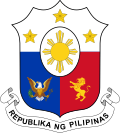| |||||||||||||||||||||||||
All 86 seats in the House of Representatives of the Philippines 44 seats needed for a majority | |||||||||||||||||||||||||
|---|---|---|---|---|---|---|---|---|---|---|---|---|---|---|---|---|---|---|---|---|---|---|---|---|---|
| |||||||||||||||||||||||||
| |||||||||||||||||||||||||
 |
|---|
Elections for the members of the House of Representatives were held on June 2, 1931 pursuant to the Philippine Organic Act of 1902, which prescribed elections for every three years. The ruling Nacionalista Consolidado retained their majority in the House of Representatives. The elected representatives would serve in the 9th Philippine Legislature from 1931 to 1934.

